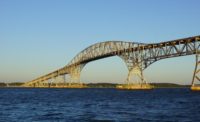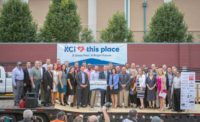While much of the world was fascinated by Great Britain's decision about whether to exit the European Union, Turkey is seeking full membership and is upgrading its transportation system to EU standards. Turkey's transportation and logistics sector is reportedly one of the country’s fastest growing industries—tripling in value since 2002 while averaging 20% growth over the last five years. Combined with Turkey’s strategic location as a bridge between the East and the West, growth and the desire to join the EU are creating new opportunities for U.S. exporters of transportation and intelligent technologies.
The U.S. Commerce Dept.'s Roza Pace and Curt Cultice interviewed, via email, U.S. Commercial Service senior specialists Berrin Erturk and Ozge Eksi about opportunities in Turkey’s growing transportation market. Erturk and Eksi are based with U.S. Commercial Service offices in Izmir and Ankara, Turkey, respectively.
Q: Why should U.S. transportation technology industries take a closer look at Turkey?
Erturk and Eksi: Turkey has doubled its transportation industry investments budget from 20 to 40% over the last decade. Turkey’s transportation and logistics sector is one of its fastest-growing industries, tripling in value since 2002, with an average growth rate of 20% over the last five years. While local construction companies have great region-wide influence in the market, this sector is dependent on critical foreign technologies such as ITS, thus providing opportunities for U.S. firms in this area.
Additionally, Turkey’s Customs Union Agreement with the European Union and its pending application for full EU membership is pushing the transportation industry to consider new investments in Turkey.
Turkey’s current transportation network is below EU-27 standards. Even if EU accession doesn’t take place in the near future, Turkey has an ambitious aim to comply with all rules and regulations of the EU, as a majority of its foreign trade is with Europe.
What specific high technologies are being sought by Turkey?
All high-technology systems, products, equipment in all modes of transportation are in great demand, including traffic engineering, security and digital information systems, lighting, vehicle tracking, marine technology and intelligent transportation systems (ITS).
Could you elaborate on Turkey’s ITS strategy?
By 2023, Turkey’s government plans to achieve major goals with ITS, including fleet management in all mass transportation vehicles, electronic monitoring systems in highway networks, conversion of mass transport stations into smart stations and development of local mobile passenger applications.
A key part of transportation integration is logistics villages; can you elaborate?
Logistics villages will combine air, land, sea and rail transportation. When completed, these villages will expedite transportation and delivery services.
Seven logistic centers have already become operational, with six more under construction. The confiscation and project development phase is ongoing for the remaining seven centers. Once finalized, Turkey will have 20 logistics centers with 34.2 tons of freight capacity.
The logistics centers are mostly comprised of container, loading, unloading and warehouse areas; bonded areas; client offices, car parks, lorry parks; banks; restaurants; hotels; repair, maintenance and cleaning facilities; gas stations and warehouses.
Another goal is the establishment of an uninterrupted transportation corridor extending from China to Central Europe. The first step will be developing the mid-Trans Asia Corridor, which means reinvigorating the historic Silk Road.
What are some major transportation trends in sea and port infrastructure?
Turkey is 90% dependent on land transportation for both freight and passenger transport. However, the country is surrounded by water on three sides—the coastline of Anatolia is 8333 km (5180 miles) long and has 160 ports. With this in mind, the European Commission’s transportation policy requires the balancing of transportation modes.
Currently, 87% of Turkey’s foreign trade is shipped by maritime transportation. Moreover, the Istanbul and Canakkale Straits that connect the Mediterranean with the Black Sea represent a region with one of the highest concentrations of maritime traffic in the world. Turkey’s government is now looking to increase the utilization of rail in both passenger and cargo transportation.
How is Turkey addressing some of the challenges in the transportation sector?
Insufficient financing has been one of the biggest challenges in realizing transportation projects in Turkey. New financial tools such as the build-operate-transfer (BOT) financing model are being introduced to the market. The promising transportation market is capturing not only local firms’ interest, but foreign firms are also active in BOT projects.
Furthermore, the Turkish government is advancing framework legislation for public-private partnership (P3) projects that would integrate all regulatory agencies under the same umbrella, and draft legislation is expected to be finalized by the end of 2016. The P3 model is preferred for major infrastructure projects, with nearly $115 billion of investment in the pipeline.
Who are the major buyers of U.S. technologies in the transportation sector?
Turkey’s government is a major buyer in the transportation market. However, if the project is a BOT or a privatization, then the buyer may be a private firm. Turkey’s ports were traditionally state owned, though most of them have since been privatized. Private firms owning the ports are working to improve all facilities and the efficiency of ports to be more competitive globally. This is also true for other modes of transportation such as state highways and bridges.
Do U.S. transportation-tech firms have a competitive edge vs. the international competition, especially from the EU, in the Turkish space?
U.S. suppliers have a comparative advantage in high-tech products as many pursue new partnering opportunities with Turkish firms. European and Asian countries are already benefiting from this promising market.
In regard to marine technologies, the EU is the largest trade partner and a key supplier of marine technologies to the Turkish market, as well as financing tools. From 2007-2014, $585 million was granted for projects for the rail industry in Turkey. Similarly, another $520 million has been granted for projects for 2014-2020. Turkish society views U.S. technology as world-class, and U.S. firms have an excellent local reputation for quality, high-technology and research.
What are some challenges in selling to Turkey, given Turkey’s proximity to the EU? Is there pressure to re-embrace European-based technology and standards?
On December 31, 1995, Turkey joined the EU’s Customs Union, which allows free circulation of goods between the two parties without any customs restrictions. Customs Union membership has a broader meaning for Turkey beyond a simple economic integration model. It represents a significant milestone to possible future integration with the EU.
In addition to enabling the free circulation of industrial and processed agricultural products through the Customs Union, Turkey has taken steps to harmonize to EU legislation on customs regulations, trade policies, competition and intellectual property rights.
To realize the free circulation of goods, Turkey pledged to adopt the technical regulations of the EU and the ‘new approach’ directives. Despite proximity to the EU market and having a similar regulatory framework in place, U.S. products are still in demand due to their superior quality and cutting-edge technologies.
How can U.S. companies best pursue opportunities in Turkey?
U.S. companies are recommended to have a permanent local presence in the Turkish market through agents, representatives or liaison offices. U.S. companies are also advised to maintain regular contact with the U.S. Commercial Service in Turkey to report on their current status and progress in the market, or to become established in the market.
Pace and Cultice work for the U.S. Commercial Service, which is part of the U.S. Dept. of Commerce. Mr. Cultice can be reached at Curt.Cultice@trade.gov.




Post a comment to this article
Report Abusive Comment